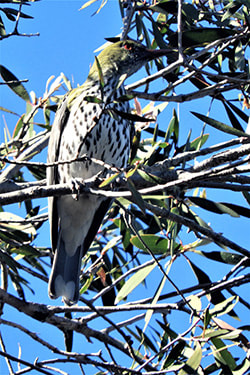They are distributed along most of the Eastern Coast and the 'Top End' in the Territory. They are part of a worldwide family that includes the orioles, of which Australia has two other members (the Yellow and Olive-backed Orioles).
|
Further reading: http://www.birdsinbackyards.net/species/Sphecotheres-vieilloti
Right: The Olive-backed Oriole is a relative of the Green Figbird and can be found in Hays Inlet and the Silcock Street Reserve. |


 RSS Feed
RSS Feed
